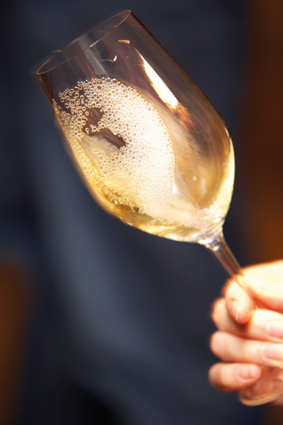English Sparkling Wine
It’s sometimes disappointed in the past, but this year the Champenois received plenty of plaudits for their work with rosés
The pink stuff, generally, is the most disappointing category in the Sommelier Wine Awards, with more plain bad wines than any other section. The exception, this year at least, was in rosé Champagne. Medals were up on last year, the feedback from the tasters was positive, and even prices were sort of, kind of reasonable-ish.
 ‘Technically this was a really strong flight,’ said team leader Natasha Hughes. ‘There were some very good wines, so we looked for those with outstanding personality. There was good choice across the price points.’
‘Technically this was a really strong flight,’ said team leader Natasha Hughes. ‘There were some very good wines, so we looked for those with outstanding personality. There was good choice across the price points.’
Apropos of which, credit must go to Messrs Blin and Lallier (a regular Gold Lister) for both producing Silver Medal-winning examples under the £20 mark – quite an achievement given that most of the medal winners were twice that price.
A key factor at this level for our tasters seemed to be whether the wines could fulfil more than just the usual role as salmon-coloured aperitif.
‘I want wines that I can match with food,’ said Lazy Lounge’s Tom Bailey. ‘And if it is a rosé, then I want wine with real rosé character and fruit to deliver character for the customer. With vintage wines, customers don’t necessarily understand the style, so it’s often better to go for better-quality NV styles.’
The advantage of NV, of course, is that it’s often also more approachable – and a few otherwise very good rosés failed to medal simply because they were still too tight. In fact, only one vintage wine, the superlative Charles Heidsieck 1999, which was awarded Gold, made it into the final stages.
‘[The Heidsieck] had a good balance of concentration and complexity and would work well with bold and even spicy food – it’s a very good champagne,’ said Charles Pashby-Taylor of Dabbous.
Interestingly, while the panel agreed that structure (and, therefore, food-friendliness) were essential, there was little enthusiasm for the extra brut or zero dosage styles of wine and none of these – felt to be too tight and austere – even picked up a medal.
‘There needs to be an immediate attractiveness to the wine, and it needs to announce its rosé character, otherwise you might as well be drinking a normal non-vintage (white) Champagne,’ mused York & Albany’s Nigel Lister.
‘Rosé Champagne isn’t the cheapest option, so it’s often worth spendig a little more, which can make a bigger difference to the quality in the glass.’
Olivier Marie, Coq d’Argent
‘There is room for more than one rosé on the list, so you can perhaps opt for a cheaper, more aperitif style for the bar, and a more complex wine that will pair with food.’
Andrea Briccarello, Galvin Restaurants